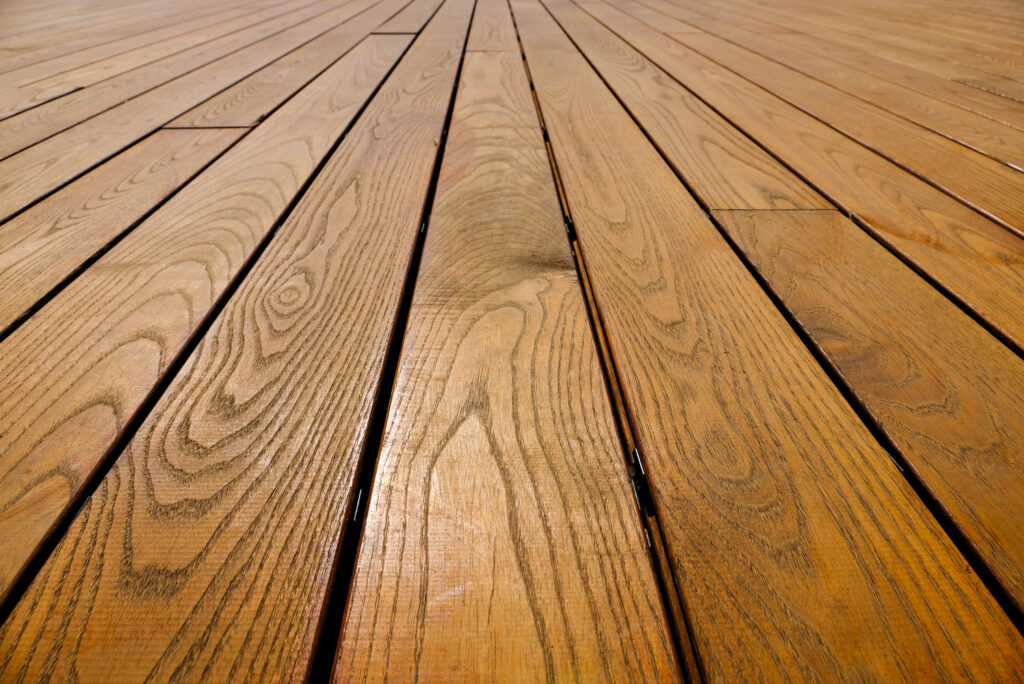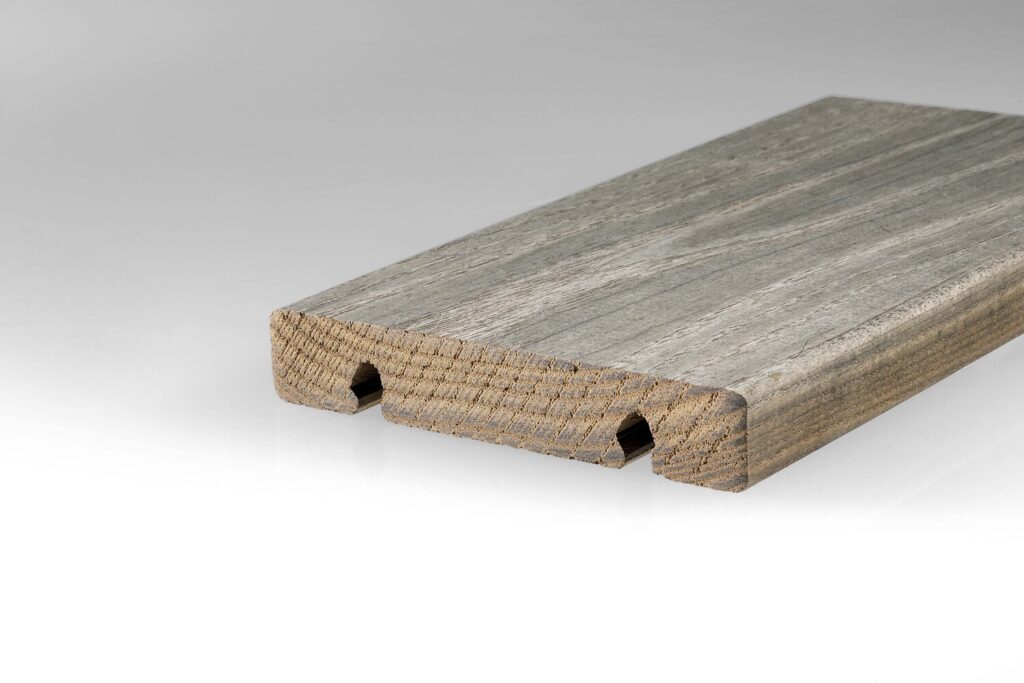Common types of wood flooring, like solid planks, can be somewhat limited in their functionality. These “classic” styles might not perform as well in certain areas, such as keeping their shape, handling weight, or maintaining consistent color. For years, companies have been developing features to address these known concerns, including stability, resistance to pressure and wear, and even coloring that stays the same. One approach involves using different core materials instead of plywood in engineered floors to make them harder and more stable. Additionally, manufacturers have experimented with treating the wood itself or the decorative top layer to achieve similar improvements. These unique, high-performance products have created specialized markets for themselves.
But what exactly is “atypical” wood flooring? Well, it refers to products that deviate from the norm and exhibit unique properties. Let’s see some innovations that may resolve this wood’s weaknesses.

Thermal modification
Thermal modification is a well-established commercial technology for improving the dimensional stability and durability of timber. Numerous scientific studies explore knowledge regarding the hygroscopic and dimensional behavior of thermally modified timber (TMT) under dry (cell wall at nearly zero moisture content) and wet (cell wall containing moisture) conditions.
Wood strengthening through heat treatment involves subjecting wood to intense heat in specialized chambers, ranging from 160°C to 230°C. This process removes chemically bound water molecules from the wood cells. These molecules typically absorb unbound moisture within the cells, increasing overall humidity and causing warping and shrinkage. By eliminating a significant portion of both bonded and free water, thermal modification enhances stability. Afterward, steam is introduced, bringing the wood’s humidity to a controlled range between 4% and 7%. This step essentially “reactivates” the wood, making it a dimensionally stable material. Even on very humid days, the pieces won’t reach a maximum moisture content of 12%, resulting in a more robust and durable material resistant to deterioration and moisture damage.
Thermally modified represents an eco-conscious option for green building projects. Obtained from renewable and responsible sources, it contributes to forest preservation and reduces the environmental impact of construction. Additionally, due to its enhanced durability and resistance to deterioration and moisture, thermally modified wood requires minimal maintenance compared to untreated wood, resulting in potential time and cost savings.

Voiding Space Filled with Polymers
Voiding Space Filling with Polymers is another method. It involves filling the natural voids or pores within wood with different polymer materials.
The process starts when the wood is carefully examined to identify its natural void spaces. These voids can be found in the cell structure of the wood. Next, a specialized polymer material is injected into these voids. The polymer can be in liquid or semi-solid form. The injected polymer is then cured or hardened using a combination of pressure and heat. This process ensures that the polymer fills the voids completely and becomes an integral part of the wood part.
The resulting wood product is transformed into a dense material that exhibits several desirable properties. The filled wood becomes highly resistant to indentation caused by both static and dynamic loads. Another is that the polymer-filled wood is more durable and less prone to damage. Finally, the dimensional stability of the wood is maintained because the polymer does not significantly alter the wood cell walls.
Controlled compression of heated and plasticized
Controlled compression of heated and plasticized wood significantly improves indent resistance. Unlike traditional thermally treated wood used in exterior applications, this process occurs at lower temperatures.
Initially, the wood is heated to a specific temperature. This process makes the wood more pliable and allows it to be plasticized. The heated and plasticized wood is then subjected to controlled compression. This compression process significantly increases the wood’s hardness and resistance to indentation.
This technology is particularly well-suited for light commercial applications where durability and aesthetics are essential, like retail spaces, offices, and other areas with moderate foot traffic.
One advantage of this innovation is that unlike traditional wood fillers (such as putty), which may shrink or crack over time, polymer-filled wood remains stable. It also provides an excellent balance between the natural beauty of wood and enhanced performance. At last, the process allows manufacturers to utilize wood species that might otherwise be considered too soft or prone to indentation.
The choice of polymer material and the injection process require careful engineering to achieve optimal results.

